The second part of our journey took us from the high arid zones of Mustang right into the rumbling, high spires of Solukhumbu. The lands of the Sherpa people, the Rai people and names like Everest, Lhotse, Nuptse, and Ama Dablam. More people, more lunacy certainly, and more of the human realm as we came right at peak climbing season. This post is more of an assortment of images with some thoughts and quotes than any kind of attempt at a narrative. Our journey took a counter-clockwise direction rather than the more traditional clockwise direction, owing in large part to better views of the mountains at certain times of day and the desire to ensure enough time for the vital ‘3 Passes’.
Vitally too, our team is just that…a team of friends who’s habits, loves, and eccentricities have become more clear in the passing weeks.

The bizarre and wonderful Namche Bazaar, where colours demarcate hotels, hostels, coffee shops…but few local dwellings.
Bolder colours with coffee shops and the brilliant and utterly bizarre spectacles that were Namche Bazaar and Everest Base Camp open open up. They lead to more remote zones and peaks that seem – with every single year – to drop more and more of their white glacial sheaths. All changes and is impermanent.
Pasang, in his role as resident magician remains unparalleled. The elegant hard man who is never short of ideas, retains his kindness, competence and just a tad of delicious irreverence. Such souls make all journeys that much more authentic.
Each day begins with tea, masala chai, or coffee. One early morning Pasang shows up to my tent to say that there isn’t any more masala for the teas (which I’m in need of). He lets a long silence ensue (and enjoys watching my expression sag, he tells me) before laughing and disappearing, telling me it is his ‘joke of the day’.
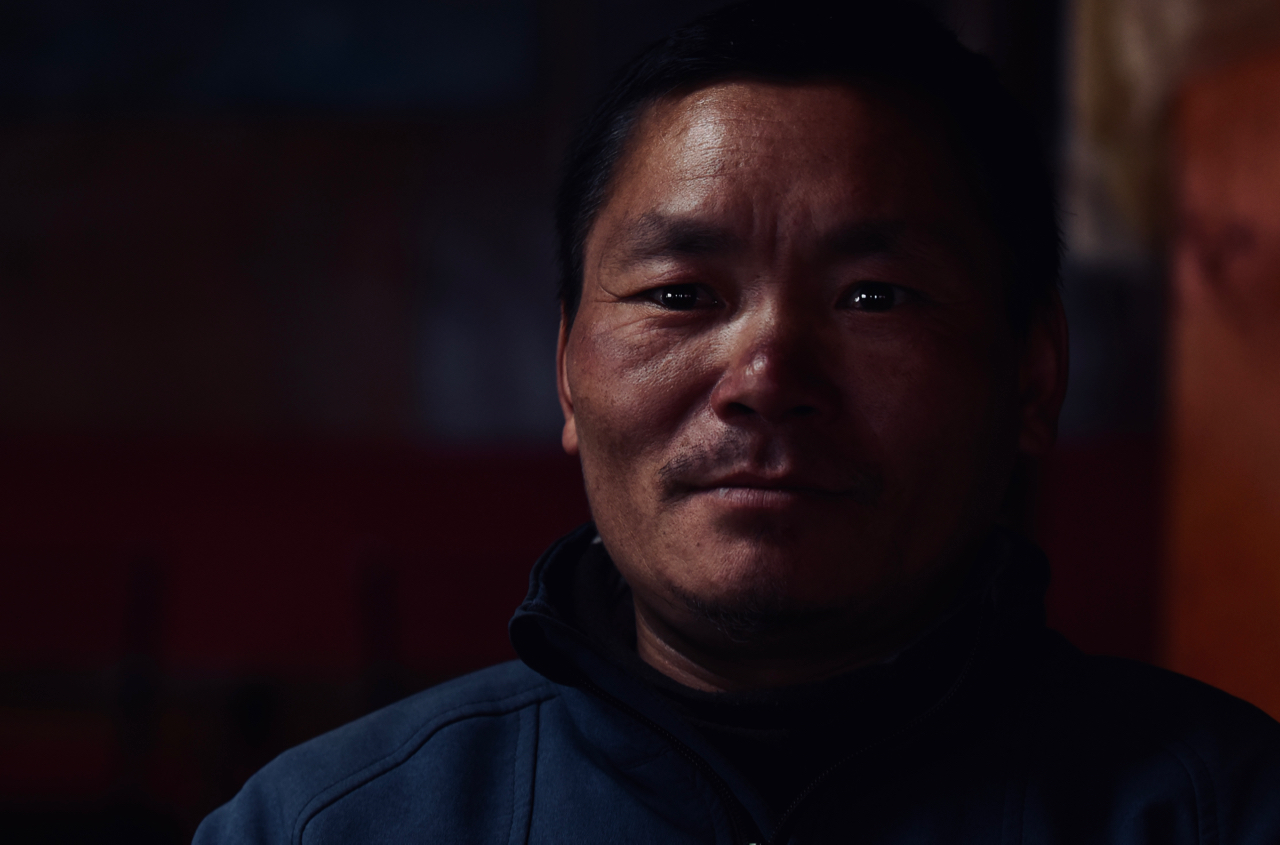
The Bull, Dawa Sherpa. One of the musts of any journey are the locals. Dawa, along with our two Pasangs allowed us to move through the big spaces.
We are gifted with two exceptionally strong Sherpas. Dawa Sherpa, I come to call Humming Power, due to his all-day humming and utter strength. The second, is another Pasang Sherpa, who becomes Endurance Man in my mind. They inevitably (and quickly) become family.

Mountain ingenuity. Kettles set upon a ‘sun collector’. No wires, no chords…the the big orb in the sky to boil the water.
Regardless of the humans, the mountains open up and it becomes easier and easier to disappear. Ama Dablam becomes a beacon of utter beauty to our east as we make our way to the ’10 hut community’ of Chukung.
Lake Imja sprawls its ever-widening swath of glacial melt, and on its edges are monitors that maintain a kind of tech-vigil on increasing depths and the risk of Glacial Lake Outburst Floods (GLOF’s)
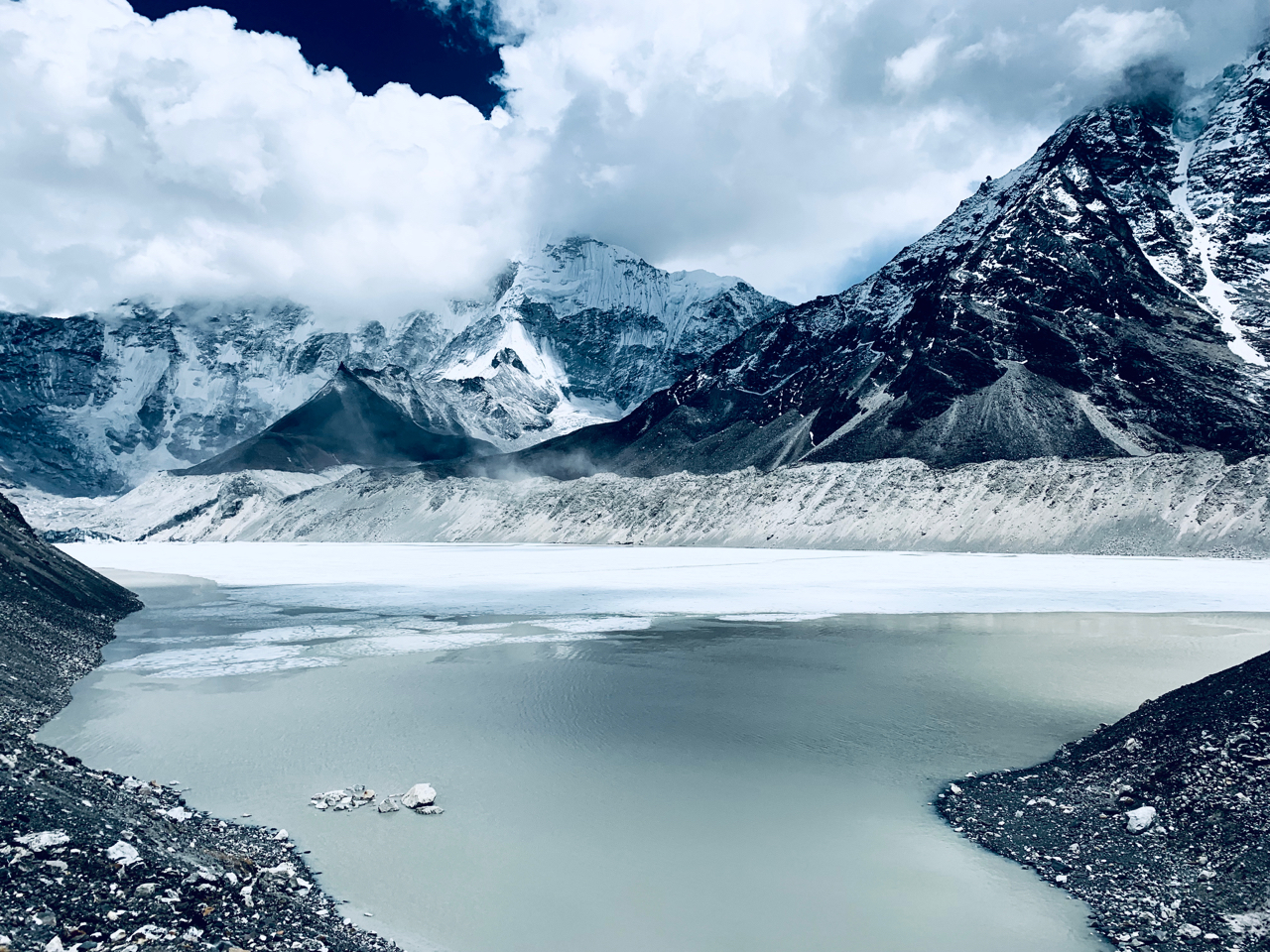
Lake Imja, near Island Peak and Ama Dablam. The lake is monitored and recently had both the Indian and Nepalese armies working to secure its borders. Lake Imja is at risk of GLOF (Glacial Lake Outburst Flood).
And still, Ama Dablam holds up the sky for us, even as higher peaks rise around her. It is her, again and again, that my own eyes inevitably drift to find.
The first of the high passes, Kongma La is refreshingly empty of bodies. It, if only briefly, is ours to ascend and breath in.
Unlike Mustang, where we had a feeling of autonomy with mules, supplies, and camps all within our sphere of control, the Khumbu region is about tea houses and porter power. It is about permits and bodies that haul loads that dwarf mortal bodies.
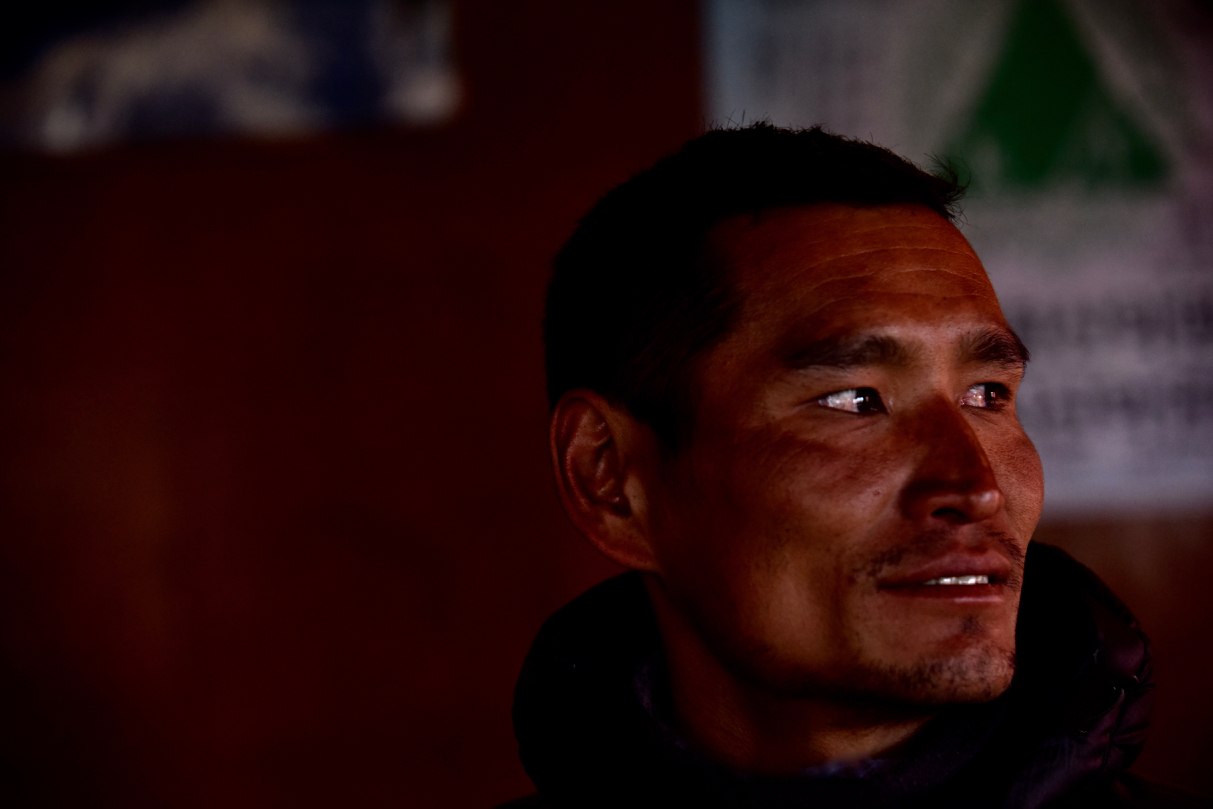
Our second – but equal – Pasang Sherpa. A man who’s power seemed to only increase through our journey through the Solukhumbu.
Everest Base Camp looms, built (and built again) upon shifting ice and glaciers. Yellow tents dot the space and seem to be on borrowed time in the mountains’ infinite moods…and a warming climate.
All of us are intent upon taking in what we can, while the landscape has this much white left upon it.
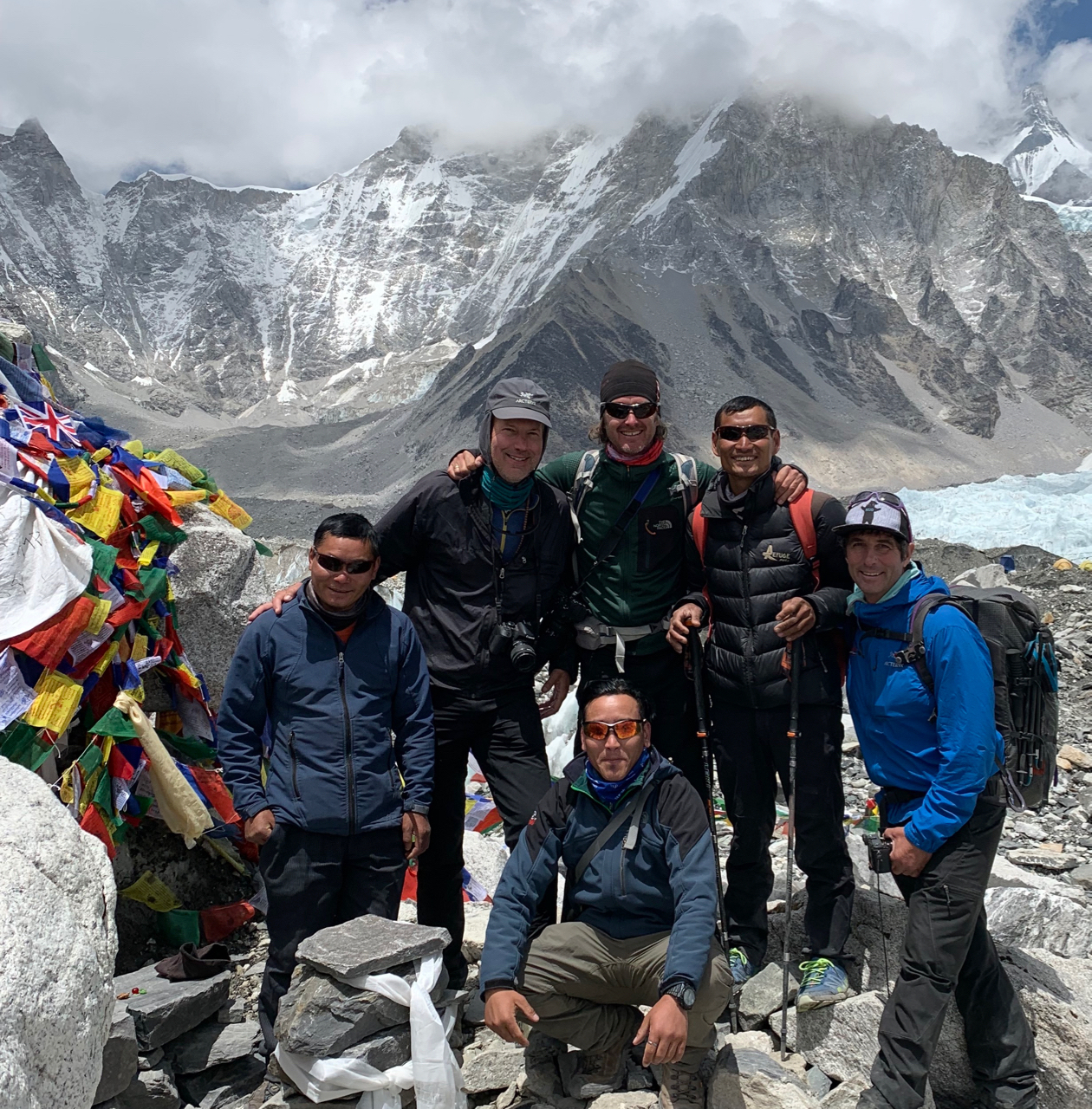
A team shot at Everest Base Camp. Left to right (top to bottom) Dawa Sherpa, Jim ‘Big Daddy’ La Torre, myself, Pasang Gelu Sherpa, Christian Santelices, and our second Pasang Sherpa (aka ‘The Magician’).
Knife edge pieces of ice and sooty moraine launch and splay themselves in every direction.
Above us, the skies of the morning promise eternal light while early afternoon winds bring in sheets of grey power and fogs. We wake early to take in what we can of the eternal light moving fast and light.
There is in our entire team the desire to escape the whole zone of Everest’s draw to the masses and get back into the more remote pass areas. Human foot traffic at times verges on maniacal, with many unprepared even for basic walks at altitude, much less anything even remotely serious.
This shared commitment to the silences and more remote spaces binds us and it is what every journey to the mountains requires, at least in some form: purpose.
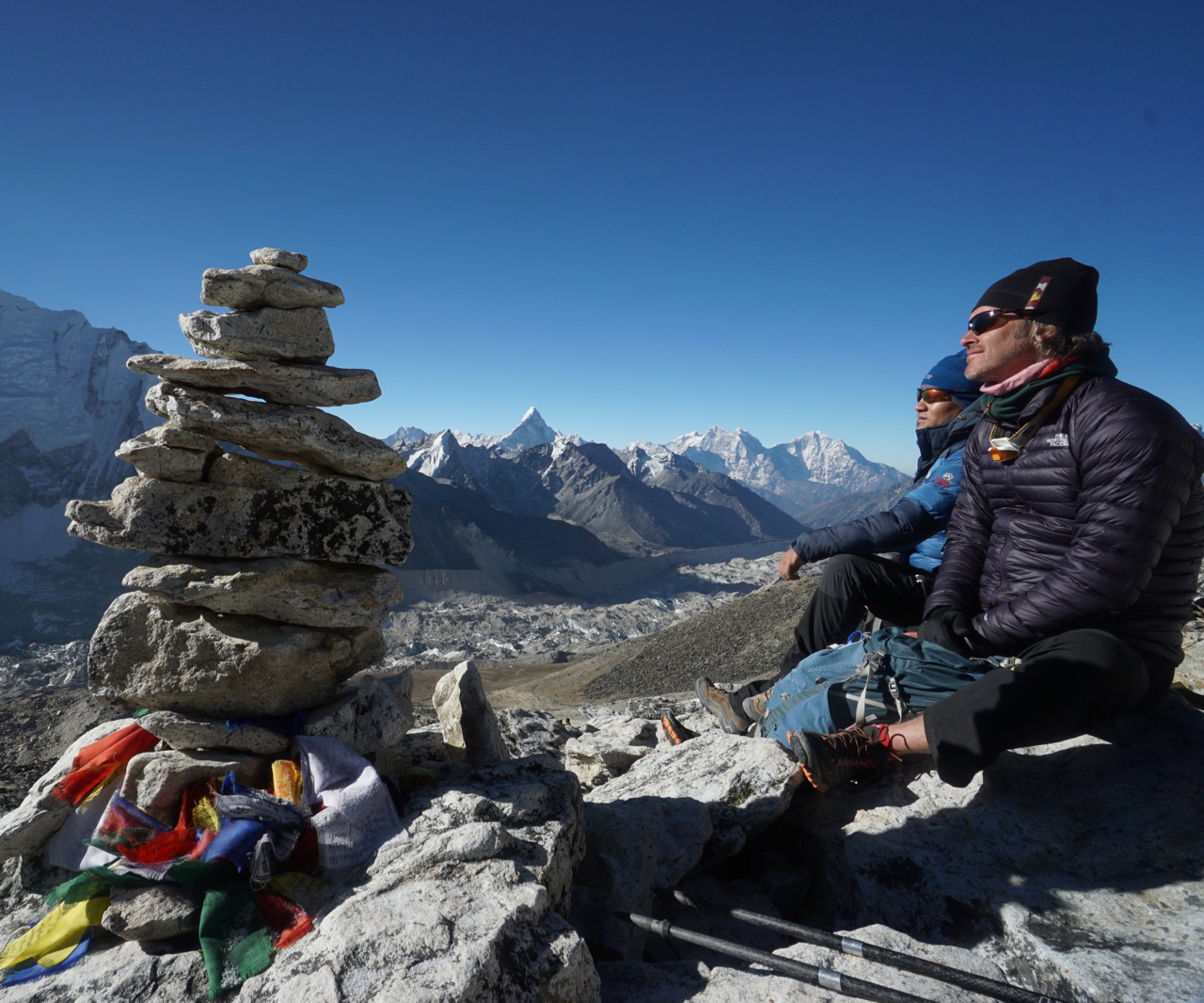
I get a moment with Pasang to just take in some of the elements. Some moments of homage to the mountains. (photo by Christian Santelices)
Dzong La Pass and Renjo Pass take us away west and once again the great brilliance of mountain passes is laid bare: what at once seems impassable, is, once ascended, a series of accessible pathways leading out, leading in, and leading onwards.
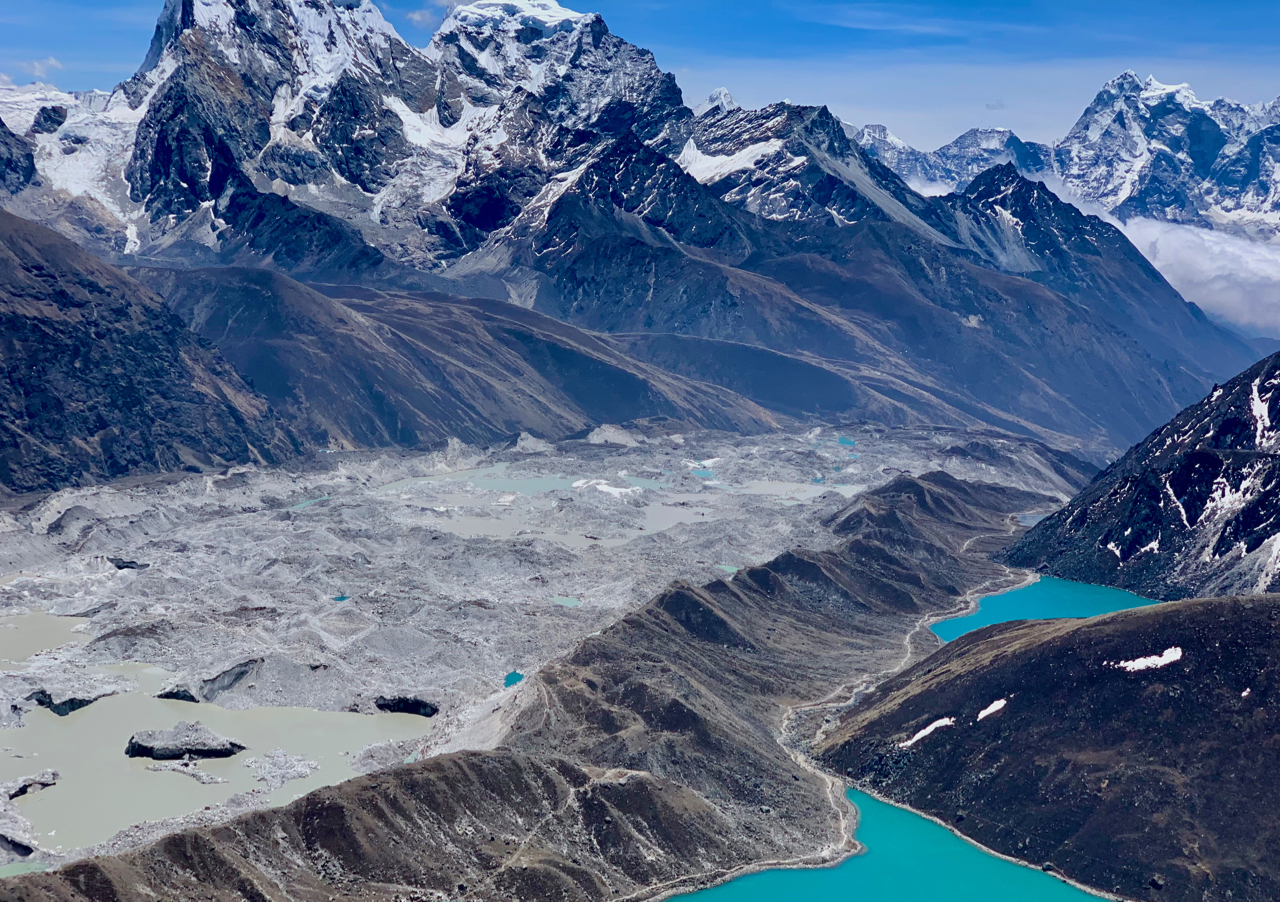
Atop Gokyo Ri, looking down at the Gokyo lakes and the Ngozumpa Glacier in the left. The glacier is the largest in Nepal.
What is clear when speaking to locals, and to those further ‘down’ from the mountains, is the need to care for the heights and not separate her influences from the wellbeing of spaces and people far away. It is all linked and connected, and as so many of the mountains have said and continue to say, “We cannot separate the elements from ourselves”. Never.

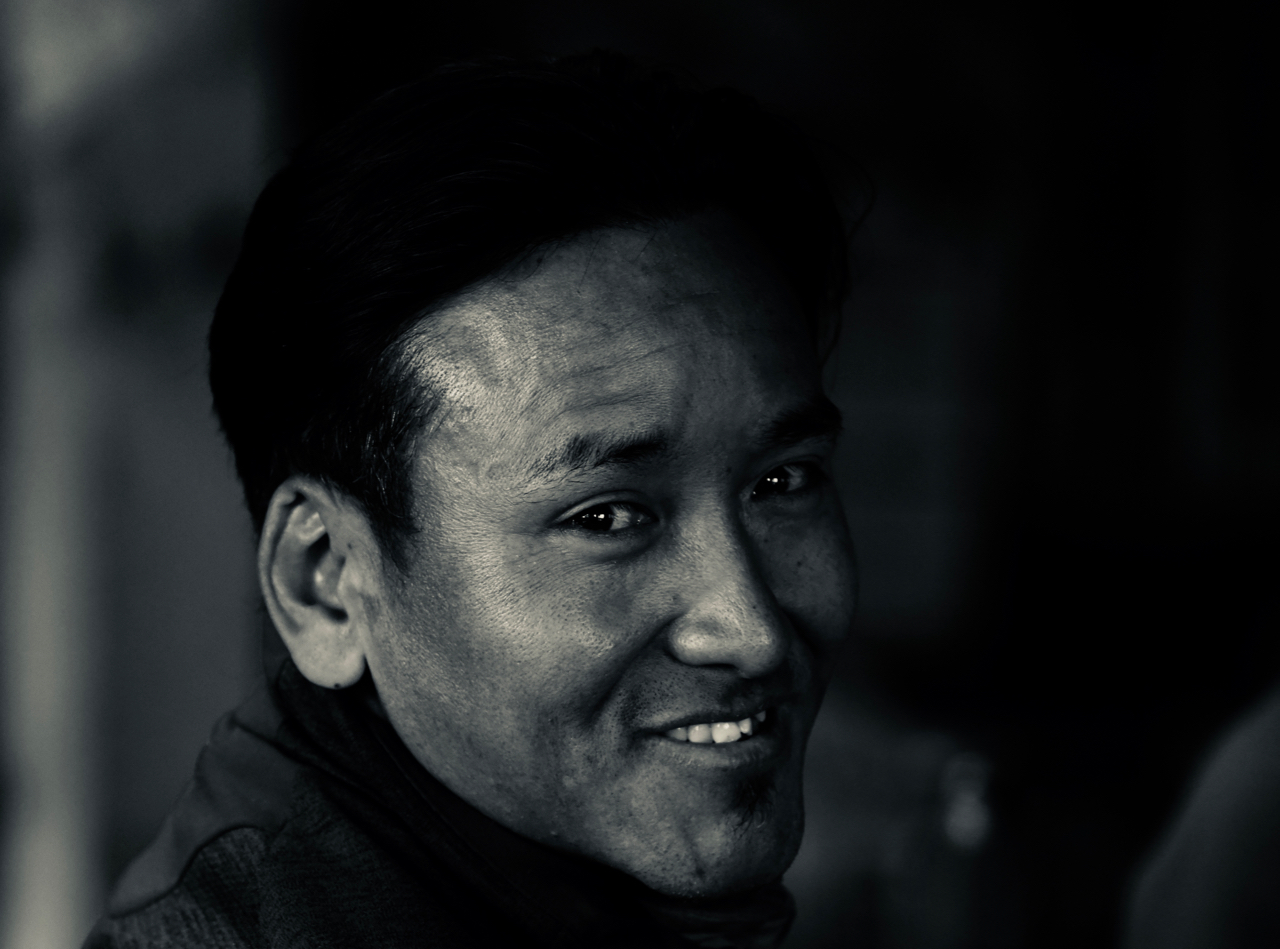

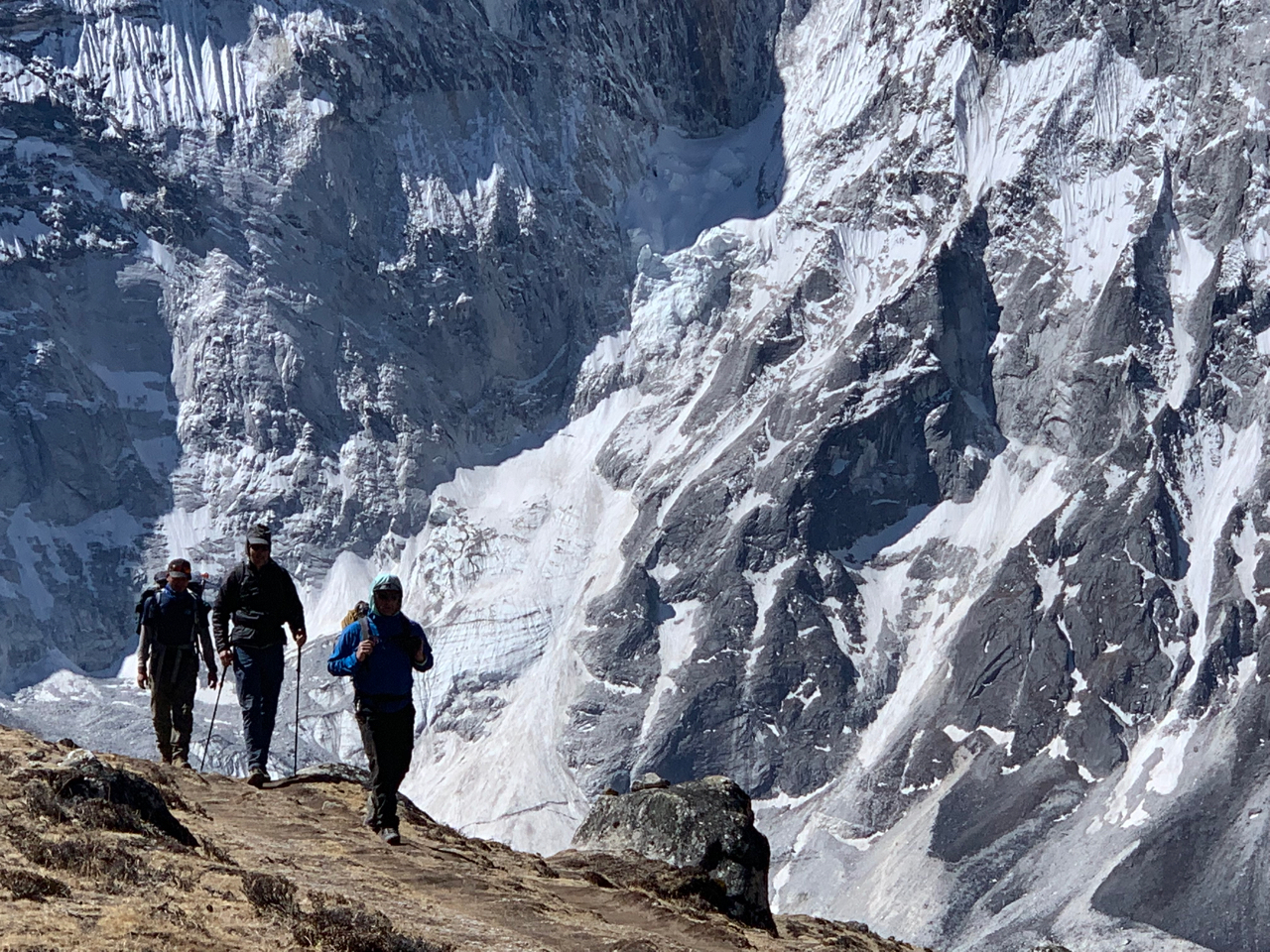
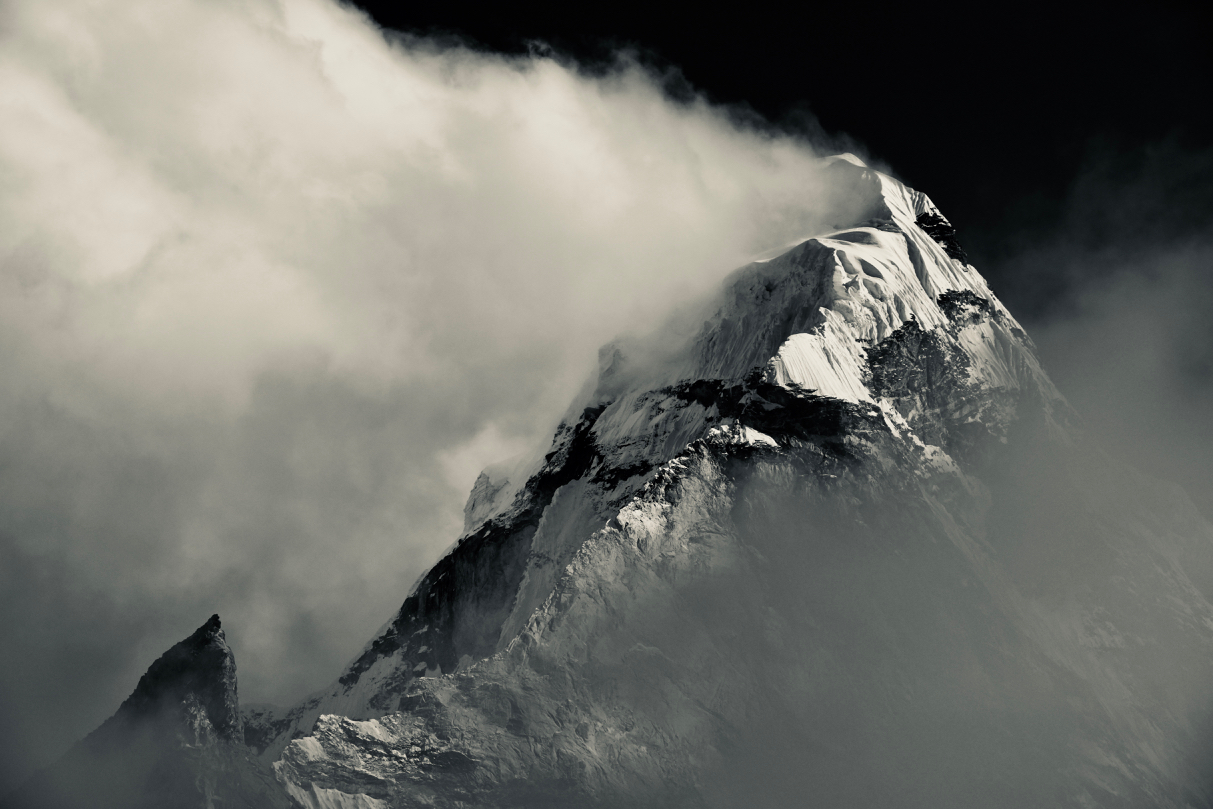



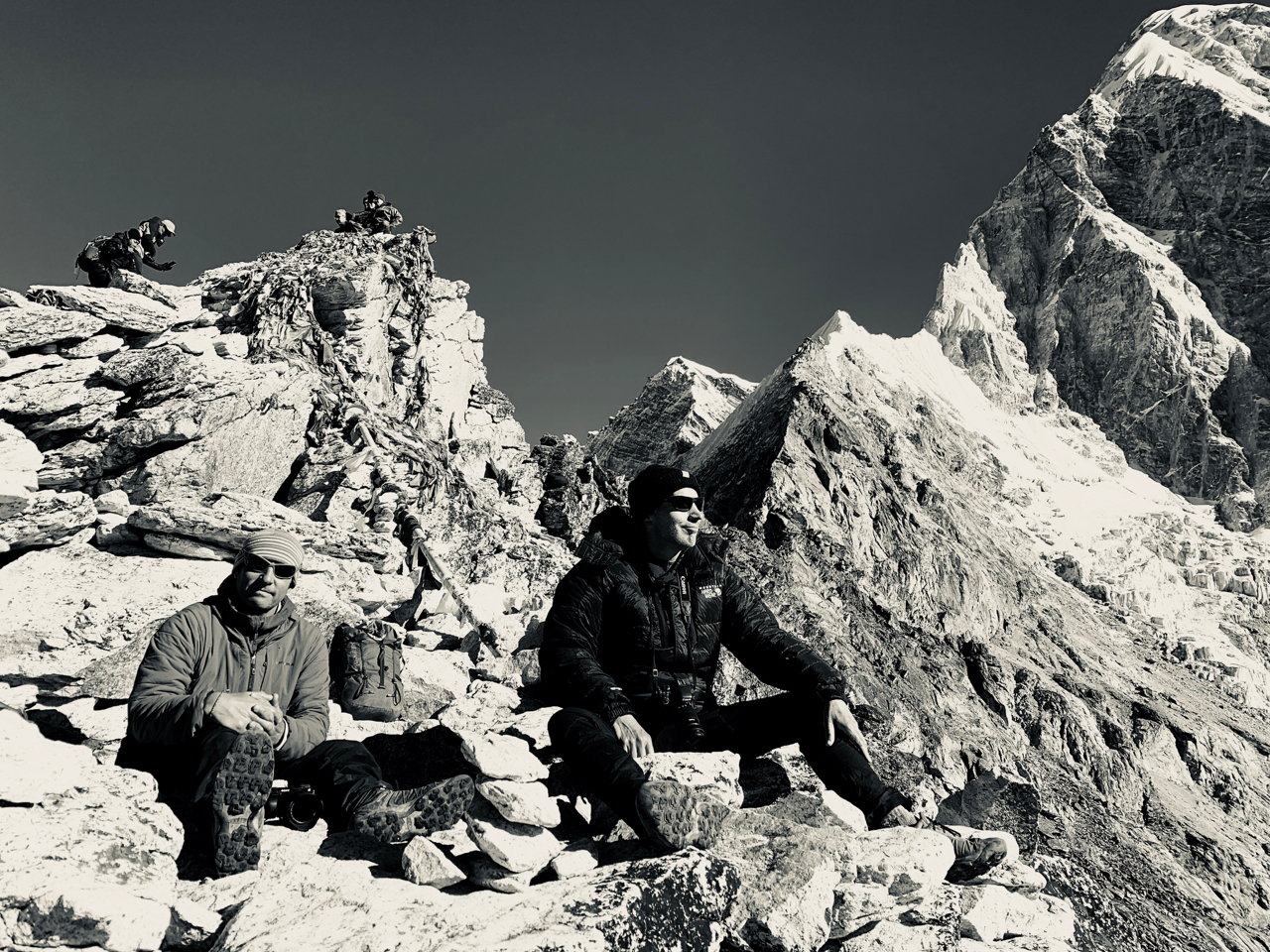
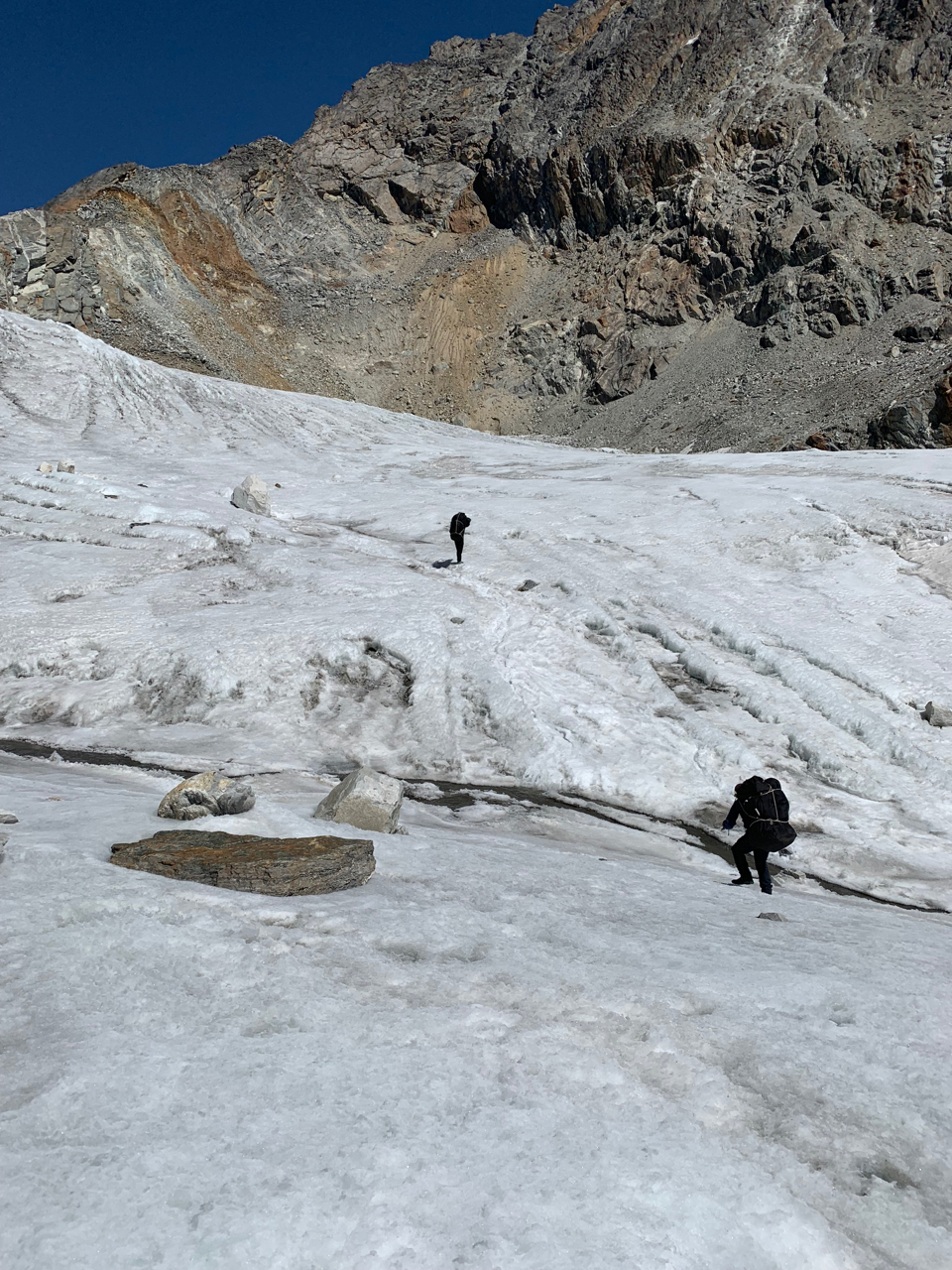
A beautiful and respectful post mixed with passion and purpose, thank you for sharing.
All about the sharing Terri. As always, thanks for joining!!
-Jeff